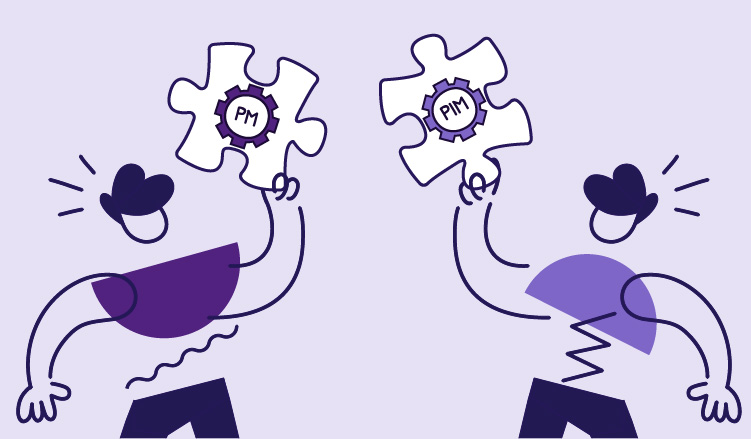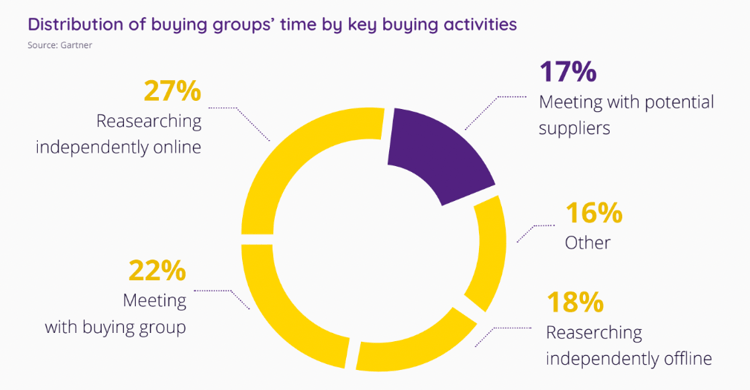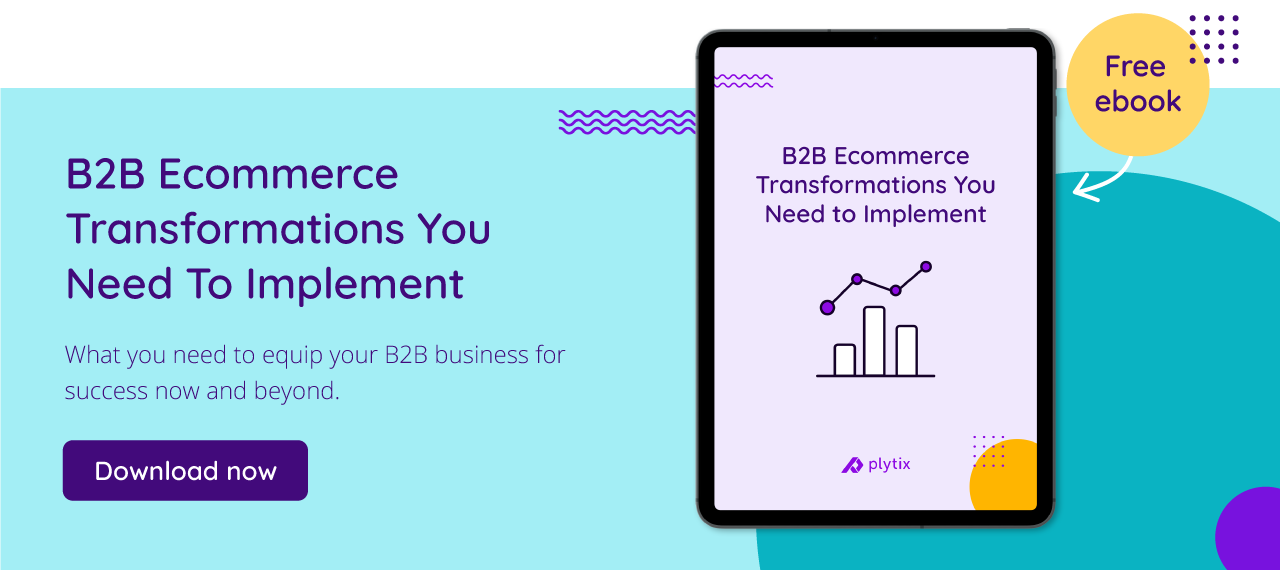How PIM and Procurement Management Work Together to Optimize Sourcing

Keep the good stuff coming
Subscribe to our blog newsletter and get monthly content that helps you manage product data smarter.
No spam. Just real value.
The success of a procurement process is highly dependent on Product Information Management (PIM).
PIM has become an integral part of the supply chain management process because it improves efficiency by providing a single source of truth for all product information. But this doesn’t stop at product information, PIM also helps procurement managers store all information related to procurement activities in one place.
This means that the procurement department doesn't need to rely on email chains or Excel spreadsheets to keep up with different procurement needs from various departments. A good PIM system will make team collaboration easy.
However, product information management isn’t just about having a centralized system for product data.
It also eliminates time-consuming and tedious tasks like manually gathering data from various sources (such as your digital asset management system and enterprise resource planning tools), updating product information, managing supplier relationships, and making sure that all of this data is up-to-date.
This reduces errors in the procurement process by helping procurement managers keep track of their products and build relationships with suppliers. Here’s how you can use product information management to transform your procurement management practices.
Product information management and procurement management
Product Information Management (PIM) is a systematic approach to managing all aspects of product information which includes product data, images, and marketing material to help sell the product.
Product information management relies on software and tools that help procurement professionals to centralize product data and automate processes.
These tools store all the information about the products, their specifications, prices, and availability.
Product information management software also manages product information by cataloging on brand portals, tracking, and reporting on product data. That, coupled with product documentation can serve as a holistic means of storing and managing the ecommerce knowledge base.
Procurement Management (PM) is the process of identifying suppliers and negotiating contracts for the purchase of raw materials or other goods and services. PM also includes tracking supplier performance, quality assurance, and risk management.
Procurement managers must have in-depth knowledge of the market and the industry they are working in to find suppliers who can provide high quality products at competitive prices.
Challenges that procurement managers face when sourcing suppliers
Ideally, the procurement process starts with the procurement manager identifying the goods and services they need and what their budget is. This helps them narrow down their search to a manageable number of potential suppliers.
To help with vendor research, procurement managers will often use niche, online directories such as G2’s software reviews or Single Grain’s marketing agencies directory to quickly find reputable products and services in a given category.

Next, they evaluate each supplier based on their respective strengths and weaknesses before choosing which one is a great fit for their company's needs.
Finally, after selecting a supplier, the procurement manager works with them to supply the goods or services needed and the supplier gets paid. The relationship between the supplier and procurement managers needs to be long-term so that both parties can grow together as partners.
However, this isn’t what happens as the procurement process is riddled with three common challenges:
1. Finding new suppliers who are a great fit for the company takes time: Narrowing down to a specific supplier involves comparing them against specific criteria that the company has, such as price, quality, delivery time, and reliability.
The procurement manager also needs to analyze data from past transactions with a supplier to make better decisions about future transactions.
2. Lack of Transparency: Suppliers may not be entirely honest about their production capabilities or product quality, which can lead to delays in production and delivery. This lack of transparency often stems from a lack of trust between buyers and sellers.
3. Time-consuming procurement processes: Procurement managers spend a lot of time acquiring new suppliers, negotiating contracts, managing supplier relationships, tracking supplier performance, and reviewing inventory.
The more needs a company has that require the procurement department to handle, the harder it is to manage procurement processes while still maintaining efficiency to meet the needs of each department.
The benefits of product information management and procurement management are mutual
Product Information Management (PIM) and Procurement Management (PM) are both involved in the process of obtaining and managing product data, which is a key component of every company’s inventory management.
The two processes are complementary in that PM provides valuable input to PIM by supplying necessary information about suppliers such as pricing, availability, delivery timeframes, and quality control.
Product Information Management helps procurement managers by providing them with accurate, up-to-date information about the products they are about to purchase.
Both PIM and PM work best when they are used together to bring out the benefits that each can provide for the other.
For example, procurement management can help product information management by providing tools for managing data quality and by providing access to new sources of product information.
On the other hand, product information management can help procurement management by providing accurate and up-to-date product data in one place to help with making purchasing decisions.
This way, procurement managers can meet the needs of different departments and their customers on time while product information managers can enjoy increased productivity because of better quality reporting and data.
How does product information management affect procurement management?
A recurring theme emerging from the common challenges facing procurement management is the management of product data to guarantee transparency, identify suppliers with ease, and save time.
Product data is the backbone of any procurement process. A major challenge manufacturers and retailers face is inaccurate and incomplete data about their products.
This means that they cannot organize and maintain product data, as well as provide a way to share that data with suppliers and other relevant parties.
Poor product data quality can lead to inaccurate product information management and procurement. This is because the data on the product's price, availability, or other attributes may be incorrect, spilling over, and causing inefficiencies and delays in the procurement-to-payment cycle.
Poor data quality also leads to higher rates of inaccurate purchasing and lower rates of successful bidding. This means that suppliers will need to work harder to make sure they are delivering the right products based on a customer’s requirements, which also leads to higher costs for them as well.
Poor quality product data can lead to detrimental effects on the performance of a company. The most common problem is that the wrong product is being ordered or sold. This can be due to incorrect information in the product database, incorrect inventory records, or errors in the way the data has been imported.
Product information management (PIM) software helps companies keep track of their products by providing them with an organized and accurate database of all their products, including detailed information such as descriptions and prices.
The solution to this problem lies in understanding what data quality means for your organization, identifying the root causes of poor data quality, and implementing a plan to improve it.
There are many ways in which organizations can improve their product data quality across all departments by establishing a clear set of standards for what makes up data quality as it is the difference between an accurate product listing and a misleading one.
Many companies are already aware of the importance of data quality and how it impacts their business.
For example, retailers can lose customers if they don't provide accurate information about the products they are selling. Manufacturers can't trust inaccurate product data and make business decisions based on it.
By using Product Information Management (PIM), manufacturers and retailers can improve supplier relationships by providing suppliers with accurate and up-to-date information about their products.
Product information management automates the process for the management of product information. It can help you improve supplier relationships by making it easier to find and share data and by enabling your suppliers to do the same.
A PIM system improves the accuracy of product data, which in turn helps companies save time and money on sourcing by providing transparency to suppliers. This can help them to make better decisions about how they want to work with that company.
Inventory and warranty management are a major concern for retailers. Product information management software manages product information across internal departments and external suppliers, ensuring you have accurate product information that can help retailers save money on inventory and warranty efforts
Product information is the most important thing that retailers need to manage their inventory and warranty efforts. They need to know when the product will be delivered, where it is located, how much it costs, and what kind of warranty they are getting.
PIM software helps retailers to manage their product information more efficiently by increasing productivity in the warehouse by automating many of the manual tasks that are traditionally done by employees in an inventory or warehousing setting.
Improve your procurement process with Plytix
The need for data quality is becoming more and more important as technology advances. As organizations become more reliant on digital platforms, accurate data is vital to their success. That explains why having a PIM tool for procurement is necessary.
Sure, enterprise resource management tools and digital asset management tools pull their weight when it comes to storing information. If you have these tools, then you don’t need more data.
Instead, you need a better way to make sure that your data is accurate, relevant, and complete, and that you can access it in a timely manner. And Plytix integrates with the tools you’re already using to bring sanity to the chaos that comes with procurement processes.
If you want to see how you can use Plytix to calm the chaos of your procurement processes, book a demo today!

Alex Birkett
Alex Birkett is the co-founder of Omniscient Digital, a premium content marketing & SEO agency. He lives in Austin, Texas with his dog Biscuit and writes at alexbirkett.com.

What if your product data actually worked for you?
We’ll show you how Plytix helps you stop fixing data—and start using it.
Related posts
Keep the good stuff coming
Subscribe to our blog newsletter and get monthly content that helps you manage product data smarter.
No spam. Just real value.





Think others should see this?
Go ahead and share it.